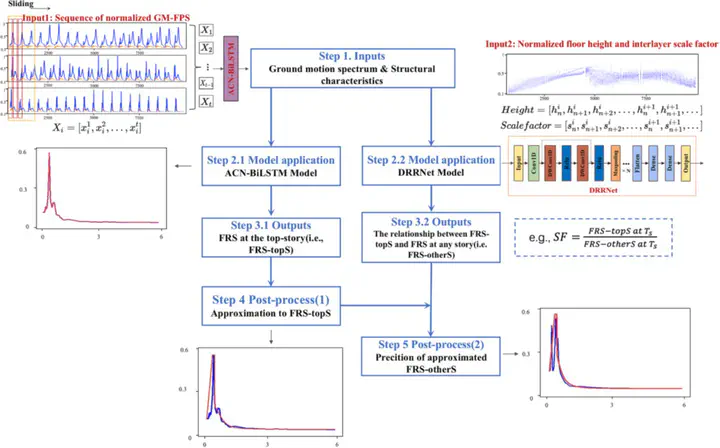 Overview
Overview
Abstract
The floor response spectrum is an essential element in designing non-structural components (NSC) under earthquakes. However, most available approaches for floor response spectrum estimation involve complex modeling work, require intensive computational resources, and lack generalizability. To address these limitations, this paper proposes a novel deep-learning-based methodology to provide a generalized estimate of nonlinear floor response spectra, which is composed of a bidirectional convolutional long short-term memory network with an attention mechanism (ACN-BiLSTM) and a deep residual regression network (DRRNet). ACN-BiLSTM uses one-dimensional convolution to extract high-dimensional abstract features of ground motion spectrum in each period. The attention mechanism and multi-scale sliding time window are used to improve the network’s convergence speed and prediction accuracy. DRRNet uses deep one-dimensional convolution to build a residual shortcut connection, which delivers the proportional relationship between floor response spectrum at different heights. With the input of the ground motion acceleration spectrum and structural characteristics, the proposed method can estimate the nonlinear floor acceleration response spectrum on any floor of a building. To demonstrate its efficacy, the proposed approach is applied to a dataset that includes floor response spectra of 56 buildings subjected to 195 ground motions. The application results indicate that the proposed approach can effectively and reliably predict the nonlinear acceleration response spectrum with an accuracy of 97.29%. Such an efficient method is promising in advancing the seismic design of non-structural components.